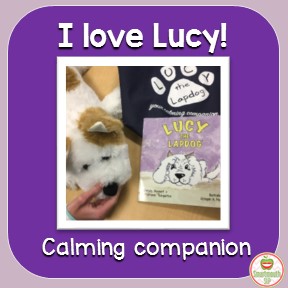
You were singing along now, weren’t you?? However, the Y.M.C.A. is neither the local gym nor the Village People song, but an acronym I used when chatting with my fellow SLP Carrie Clark on her podcast, “Storm of the Brains” earlier this month! The Y.M.C.A. acronym stands for:
Yes (Y) Medical/Social (M) Complimentary (C) Availability (A)
Our topic of conversation was what to do with little guys who are resistant to the therapy setting. I know I have had several of these friends over the years and understand that there are MANY reasons when our speech buddies might be having a hard time participating in intervention settings. Check out our podcast HERE and make sure to follow Storm of the Brains for lots of fantastic insight into speech and language challenges from SLPs around the country!
Here are some thoughts on what we can offer our families and why we might be seeing challenging or non-compliant behaviors :
Yes:
The family has already heard a lot of no, so make sure you offer something that you can give them a yes to. There is nothing scarier to a parent then to hear that no one can help your child or there is nothing you can do. The power of a yes can help them work through the really difficult times. It may be that your yes is that you can refer them to others or yes, that you can help their child directly (I wrote about the power of yes and no on my blog last year).
As a mom, I try to be aware of balancing honesty with compassion, and I am careful to never take away someone’s hope for their child. We need to find something positive to note about the child, said from a sincere place. The fact that you see something positive in their child will help build trust with the family because let’s face it, they might not be hearing a lot of positives right now. From a parental point of view, if I feel that you like my child and noticed something positive about them, I am so much more open to listening, even if it’s hard to hear.
Medical/social:
Who needs to be included on the child’s team? It may one, some or all of these support services and providers. Where do you help a parent start?
A developmental pediatrician is a great idea if you feel there may be something more diagnostically going on with your young clients/students. A developmental pediatrician can be the one to consider a diagnosis (in addition to a general pediatrician) and also function as a gate keeper to consider/manage medication options or consider/manage/refer to holistic or other therapeutic options.*
The developmental pediatrician may also be helpful in connecting families with other parent mentors in the community. A new diagnosis can be a lonely road to walk as a parent! Support/information for parents is crucial as this time may be very stressful on the family!
We also need to be aware of the financial costs of all these therapies and become familiar with the support resources available in our communities (Katie Beckett, Medicaid, insurance, scholarships at private therapy centers and hospitals).
Complimentary: Other therapy considerations*
- OT evaluation for sensory components: calming, attending, regulation, connection
- ABA consult: learning how to learn, highly structured program not natural language
- School based SNP programs for 3+ year olds in their area
- Hearing eval to rule out hearing loss
- SLP role in providing visual schedules & supports (less language may be better right now). A visual schedule and work first boards are a great place to start.
- Choiceworks app is awesome for visual schedules on ipads
- What reinforces the child? Edibles are a good start, reinforce frequently then fade, talk to the parent to find out what motivates the child. CONSISTENCY IS IMPORTANT!!
- Start with short sessions of therapy and then build in sensory breaks, highly reinforcing activities (music, ipad, spinning, mini trampoline, swing). They may not be ready for individual speech therapy until some of these other interfering behaviors are addressed first!
- Consider co-treating with OT, but be aware of reducing language and sensory overload
- Behavior specialist: help with structure at home and identifying specific behaviors such as non-compliance to target. They can be part of the team to help figure out the function of the behaviors as well (is it sensory, frustration, communicative intent, attention?)
Availability: Learning to learn:
Neuro-typical learners are naturally more connected to their learning environment and learn incidentally. Our kids, especially little guys on the spectrum, often don’t. It’s often difficult to address language concepts and play until child is available to instruction. Pulling apart interfering behaviors from being available is important because both can impeded being ready to learn!
Children with sensory, communication or cognitive impairments have to learn how to learn first: joint attention, reciprocal play, and emotional reciprocity are all foundational skills that have to come first. Michelle Garcia Winner talks about these being the roots of the social language tree and has a great visual poster to talk about the foundations and growth along the social continuum. All these pieces of the puzzle are equally important to helping our students/patients transition through these difficult times therapeutically and to support their families in the process.
What advice do you have for working with children who may be resistant to therapy? Share here! It really does take a village, doesn’t it people? (Sorry, couldn’t resist!)


